Root Awakening: Plant could be a Tetracera species
Sign up now: Get ST's newsletters delivered to your inbox
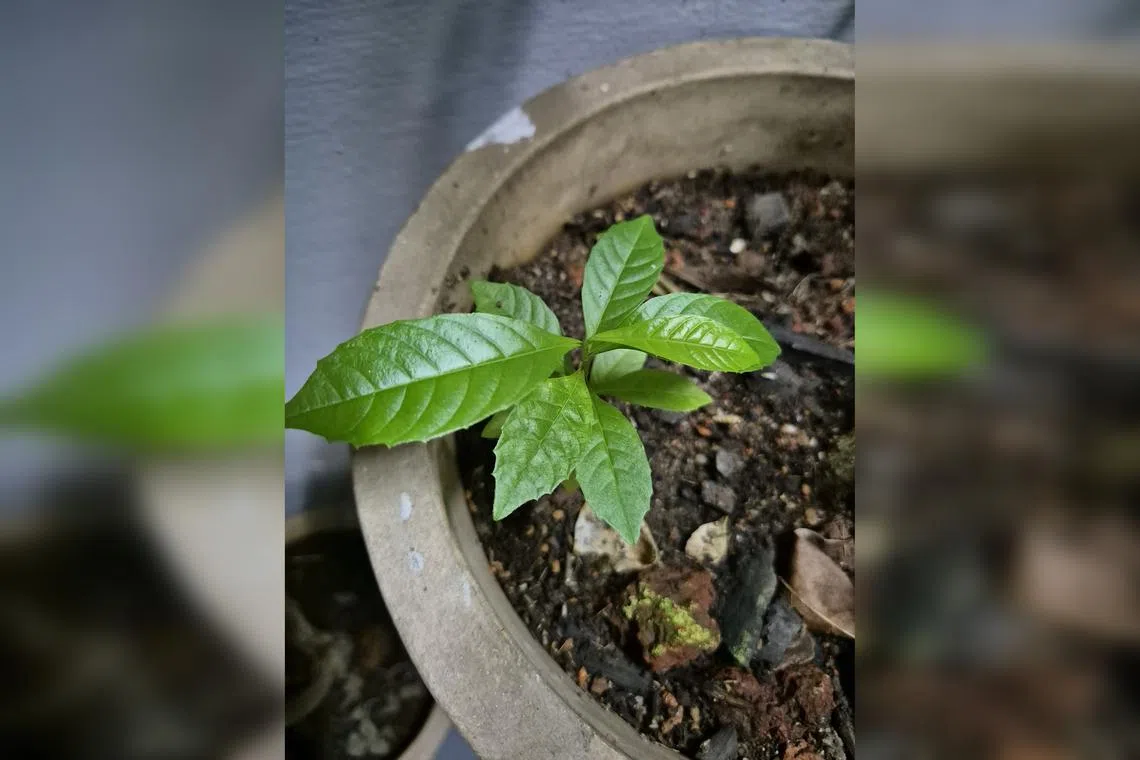
Tetrasera species need a sunny spot with well-draining soil.
PHOTO: NICOLE ONG
Wilson Wong
Follow topic:
Tetracera plants grow as vines
This seedling popped up in my lime plant’s pot. What is it and how do I care for it? Should I repot this at this stage?
Nicole Ong
The young plant appears to be a species from the genus Tetracera. Three species can be found locally: Tetracera indica, Tetracera loureiri and Tetracera scandens. They grow as twining vines, and can be distinguished by their flowers and leaves. The differences will be more apparent when your plant grows larger and has flowered.
Tetracera species need a sunny spot with well-draining soil. They need to be provided with a support, such as a trellis, to climb. You may want to carefully move the plant into another pot so it does not compete with your lime plant for nutrients and water.
Leaves may have been sunburnt or injured by chemicals
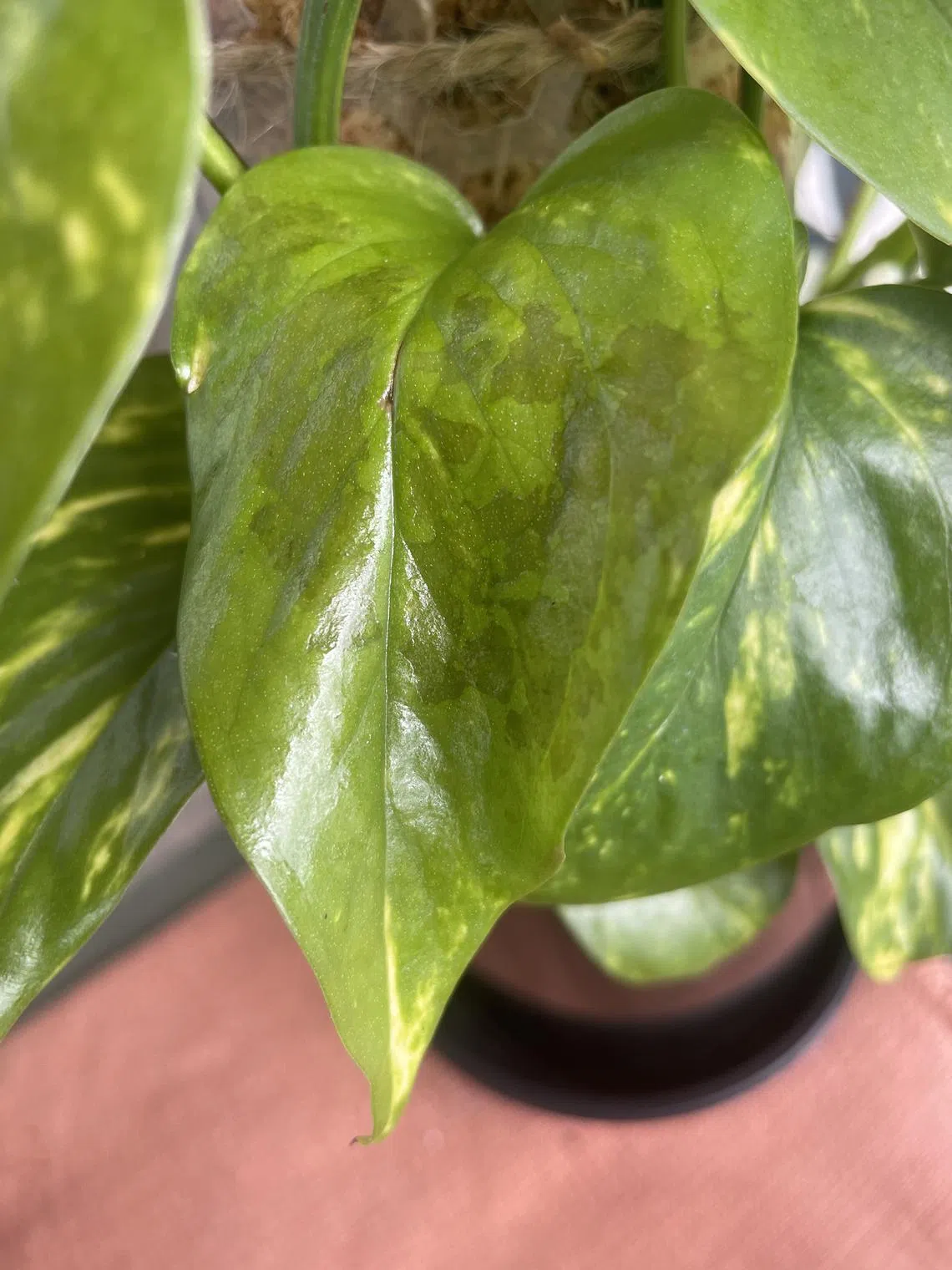
The patches on the leaves of the Golden Pothos appear to be a kind of burn.
PHOTO: SAM YEO
I am trying to train my Golden Pothos to grow up a sphagnum moss pole. I recently pruned a couple of yellow leaves and noticed some discolouration on one of the remaining leaves. The plant is watered weekly and sits in a window that gets morning and afternoon sunlight, which can sometimes be harsh. Is this sunburn or another issue?
Sam Yeo
Did you recently spray any chemical or water-soluble fertiliser on your plant or has it been exposed to more intense sunlight lately? Also, did it wilt when the soil became drier?
The patches on the leaves appear to be some kind of burn, which can be caused by injury to leaf tissue when a pesticide or overly concentrated chemical is applied to the leaves.
If the plant was growing in the shade and was recently moved to a sunny spot, it can suffer from sunburn.
To reduce the odds of injury, test a new chemical on a small part of the plant before applying it on the rest of the plant. Plants that have been grown in the shade should be slowly acclimatised to sunnier conditions.
When a plant is allowed to wilt due to lack of water, it will often develop yellow older leaves. Check regularly for soil moisture content and water promptly to reduce the likelihood of plants suffering from moisture stress.
Desert Rose likely lacks sunlight
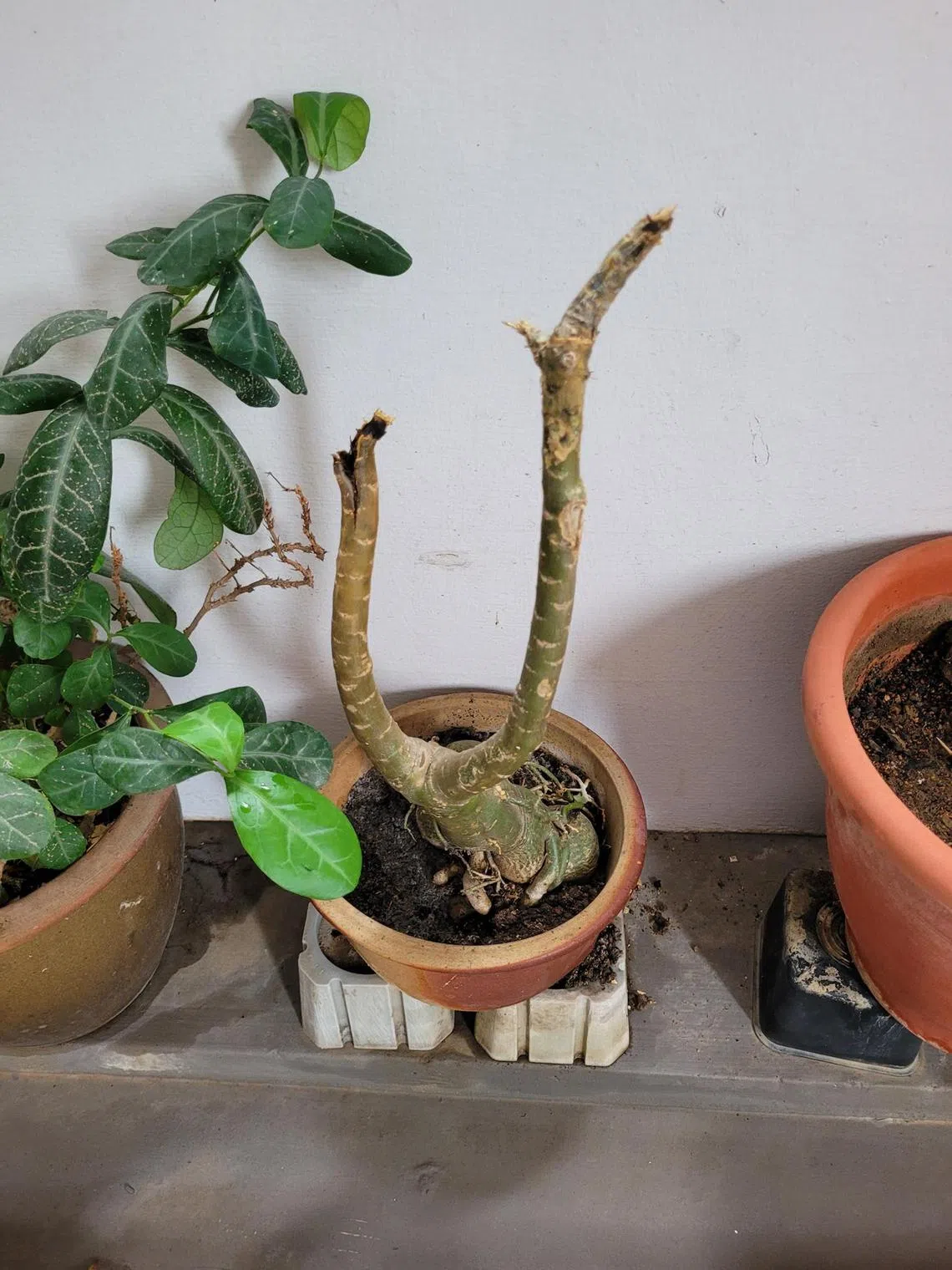
This plant appears to be lacking the sunlight that is needed for healthy growth.
PHOTO: CHEE YEN NG
I moved to a unit that is windier and less sunny than my previous home. My Desert Rose used to bloom, but is no longer doing so. What is wrong and how can I save it?
Chee Yen Ng
Your plant appears to be suffering due to a lack of light. This species needs at least six hours of direct sunlight a day. A lack of light will lead to poor vigour and wet feet, which can cause root rot. Under low light, moisture in the soil evaporates more slowly.
Avoid potting spider plant too deeply
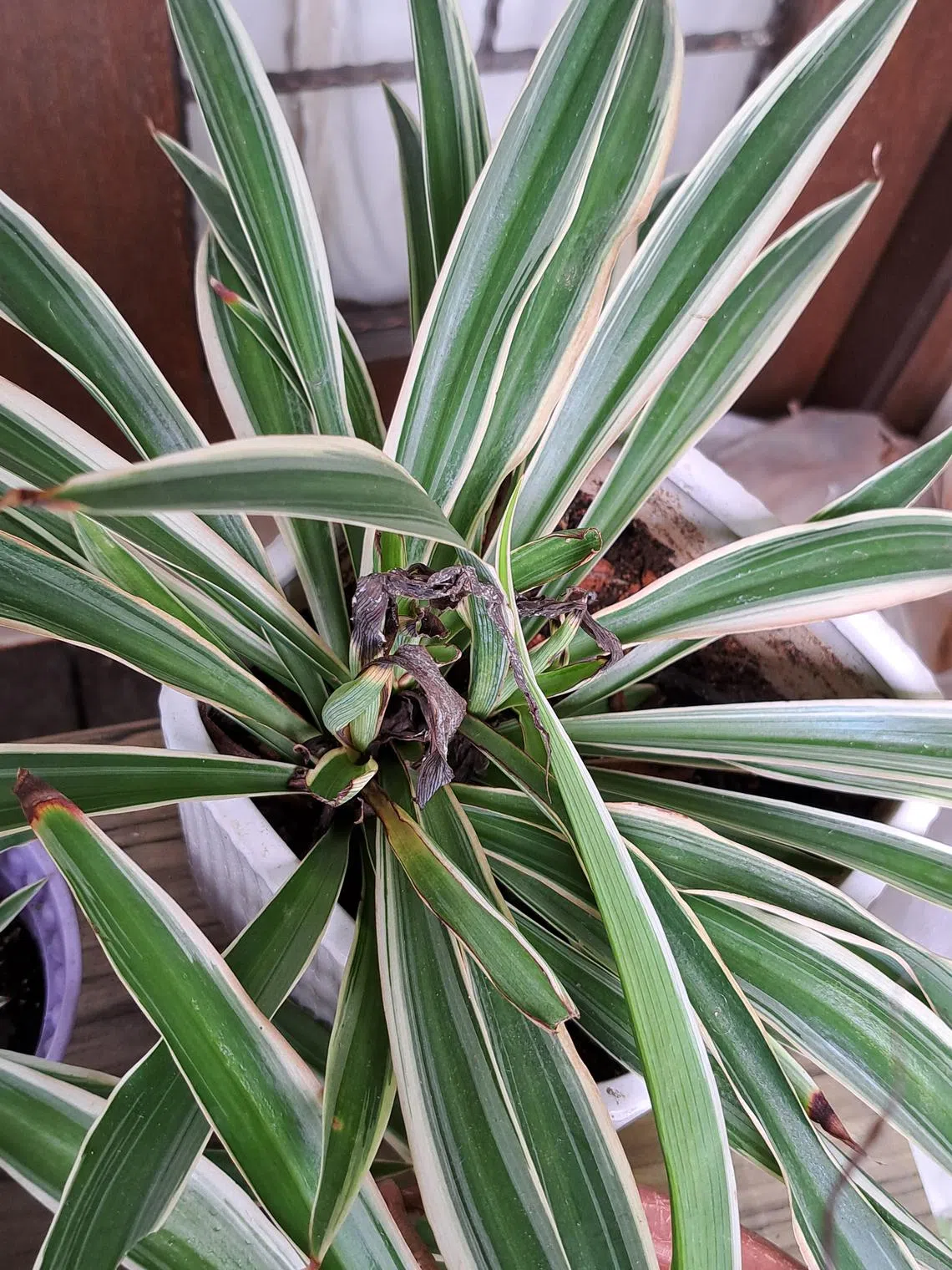
The spider plant may have been planted too deeply during the repotting process.
PHOTO: FONG CHENG HAN
My spider plant’s new leaves are turning black. How can I save it?
Fong Cheng Han
Spider plants grow as rosettes and gardeners tend to plant them too deeply. Soil that has been heaped around the plant’s crown or fallen into the centre of the plant or its leaf axils can cause the leaves to rot and fall apart.
Let the plant dry out slightly before watering again. The plant can develop wet feet and rot in a moisture-retentive mix.
Finally, the spider plant needs four to six hours a day of filtered sunlight. The lack of light can lead to a weakened plant that is prone to pests and diseases.
Hand-pollinate soursop trees
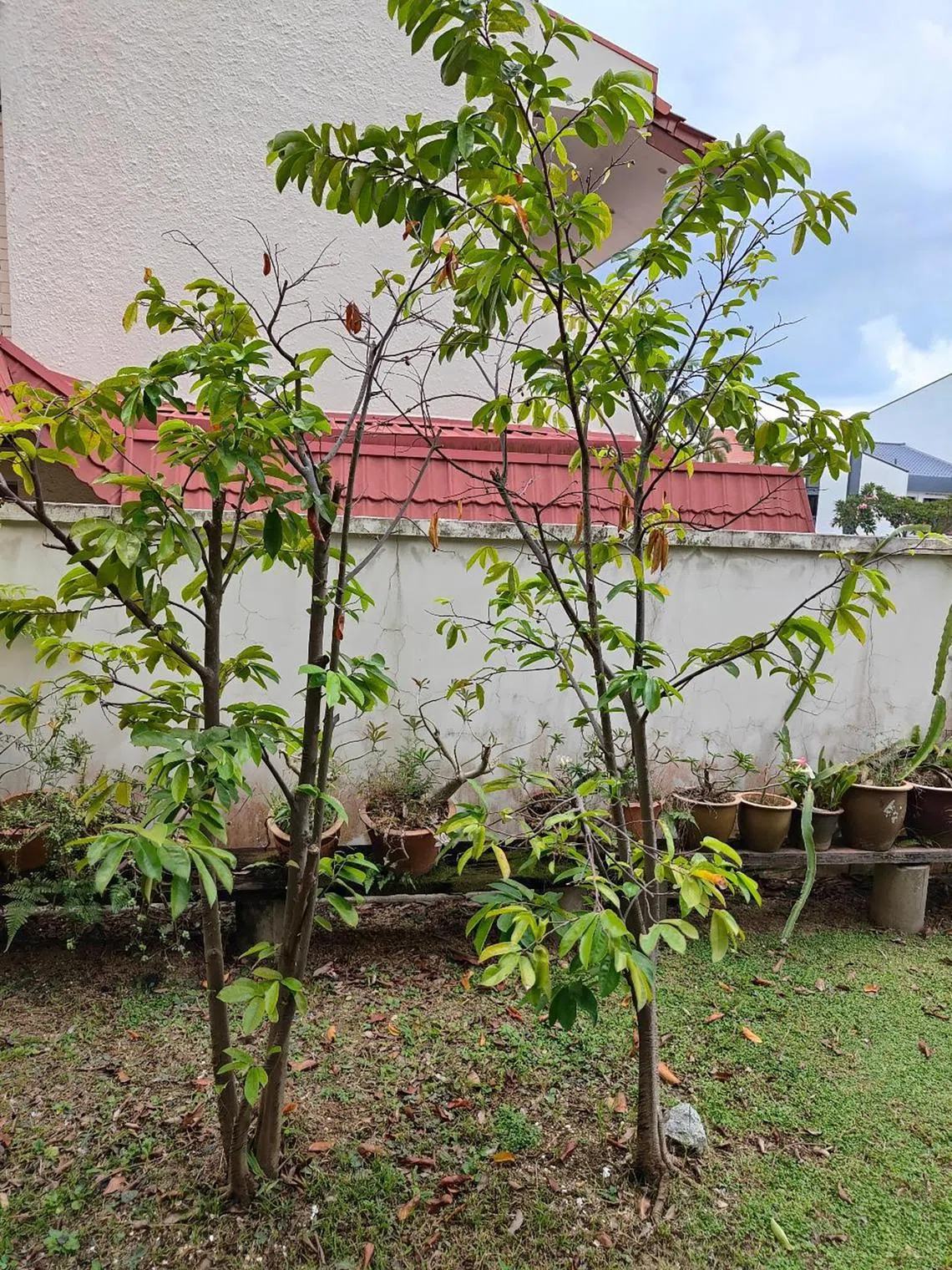
Improve the soil conditions of the soursop plants to encourage fruiting.
PHOTO: JEFFREY TAN
My late mother planted these two soursop trees. Although they have flowered, they have developed only two small fruit. How can I get these trees to fruit?
Jeffrey Tan
From the picture, your soursop trees’ soil conditions can be improved. Apply mulch around the base of the tree so the plant can develop a healthier root system.
Remove the grass growing near the trunks of your trees. Mulch each tree by placing compost around the base of each tree within the drip line (the area from the trunk to the tip of the longest branch) and prevent any compost from touching the base of the trunk. For more information, search online for detailed instructions on how to mulch trees. Feed your trees with fertiliser to promote growth and larger fruit.
You may need to perform hand pollination to promote fruit production if natural pollinators are absent. Soursop trees have a unique flowering habit and their pollination differs from that of most other plants. Refer to online videos for a better understanding of this plant’s biology and proper pollination technique.
Answers by Dr Wilson Wong, an NParks-certified practising horticulturist and parks manager. He is the founder of Green Culture Singapore and an adjunct assistant professor (Food Science & Technology) at the National University of Singapore.
Have a gardening query? E-mail it with clear, high-resolution pictures of at least 1MB, if any, and your full name to . We reserve the right to edit and reject questions.

